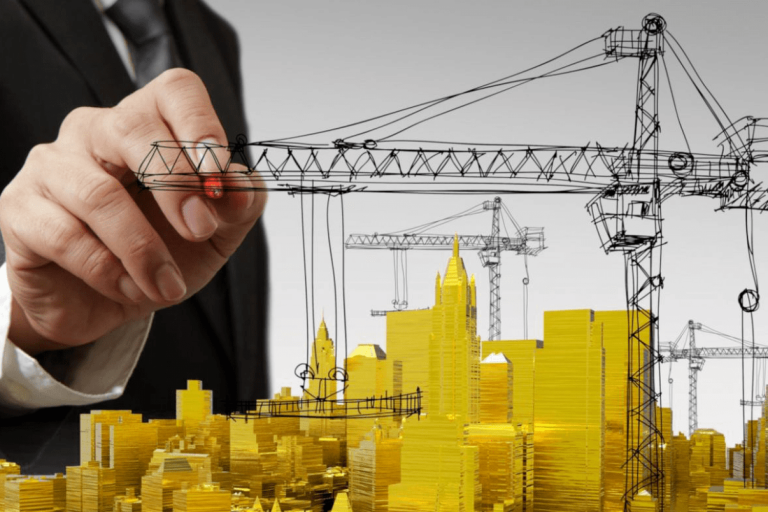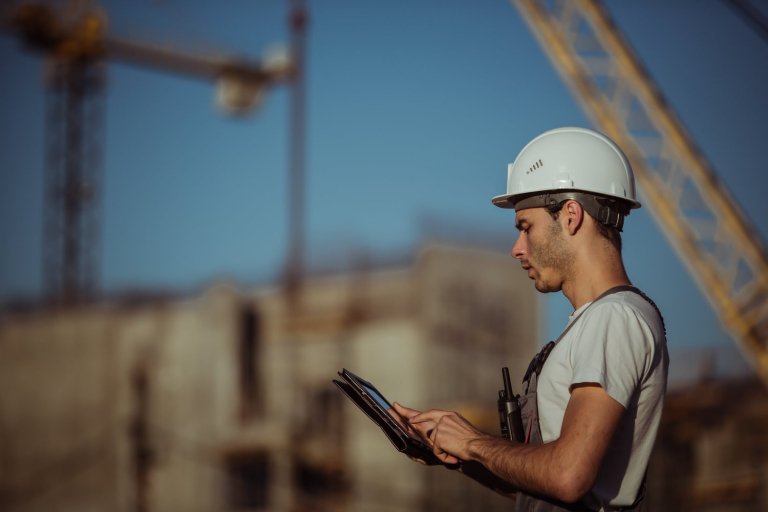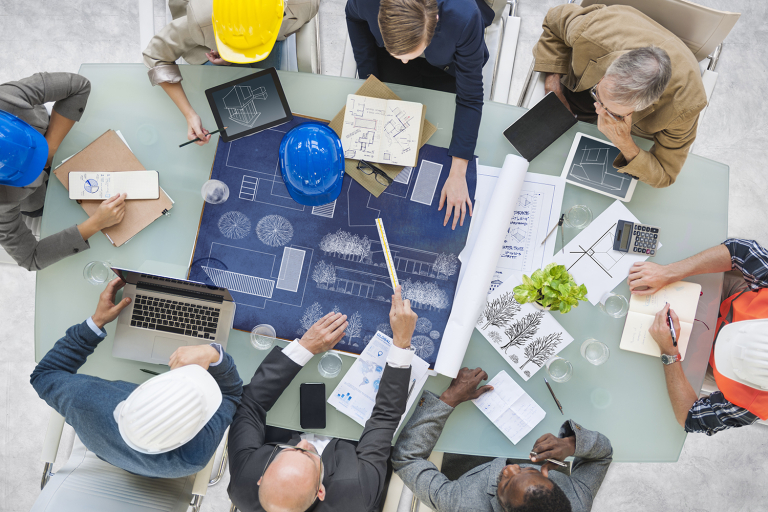Construction technology, often referred to as ConTech, is rapidly transforming the landscape of the construction industry. In this blog post, we delve into the definition, benefits, and trends of construction technology, exploring its profound impact on project delivery, efficiency, and innovation. As the industry continues to embrace digitalization and automation, understanding the implications of construction technology has become essential for stakeholders across the construction ecosystem.
What is Construction Technology?
To begin with, construction technology integrates innovative tools and methodologies to enhance the quality of work. It uses stuff like machines that work by themselves, apps that help with bids, and machines that can drive on their own.
Secondly, construction technology uses computer tools, automatic actions, and looking at data to make decisions better, work well together, and get things done faster when building things.

Read more: The Top 15 Construction Issues With Strategies To Tackle Them
Unbelievable Benefits of Construction Technology
There are four great advantages of using construction technology:
Increased Productivity
Every construction job is different from the others, and this can make it tricky to find one solution that works for all of them. But guess what? Technology comes to the rescue here, using things like Artificial Intelligence (AI) and Machine Learning (ML).
These fancy technologies can do tasks on their own, which helps things run more smoothly. This also makes construction work faster and better. And because of these tech improvements, new and better ideas come into construction, making it change and get better quickly.
Enhanced Safety
Building things can have big construction issues, and some can cause really bad accidents at work. However, luckily, technology can help make accidents and injuries happen less often. This keeps workers from getting hurt and stops the work from being late and costly. By using special construction technology like sensors and wearable devices, construction sites can quickly find and fix things that might be dangerous.
When we really care about keeping everyone safe at work, it helps create a better and happier atmosphere for the team. This also makes talented people want to join our line of work. Plus, when construction companies pay a lot of attention to safety, they become well-known for being trustworthy. This makes them better at competing with other companies and getting chances to do more projects.

Reduced Labour Shortage
Imagine technology as a helper for construction companies that don't have enough workers. When machines can do some tasks on their own, these companies can complete more work even if they don't have lots of workers.
Construction technology makes the team work better. It also benefits the current workers because they don't have to do all the tough jobs, which makes them less likely to get very tired. This makes everyone in the team feel happier about their jobs.
Improved Collaboration
When folks team up for building things, like houses or buildings, it can be tough because the places are huge and lots of folks need to make choices. But if they use special computer programs that help them work together, talking to each other gets simpler. This means they can decide things quicker and everyone gets the latest info right away. This helps the whole project go more easily.

Emerging Trends In Construction Technology That Demand Your Attention
Employing Technology to Advance Sustainability
When builders use BIM (a special way to plan) and prefabrication (making parts before), they use resources better and make less trash, which is good for nature. Adding things like solar panels and smart grids that use clean energy also makes less pollution, which is nice for the environment.
For instance, the World Green Building Council explains that green buildings can use 20% to 30% less energy, which is good for reducing the bad stuff in the air called carbon emissions. Many projects are proving this by becoming certified as green buildings, using programs like LEED and BREEAM. In fact, there are over 100,000 projects around the world that got certified with LEED, and they cover a really big area of 2.8 billion square meters.
Furthermore, Grand View Research thinks that the sustainable construction field will grow by 11.7% each year from 2021 to 2028.

Integrating BIM and GIS Data for Asset Management
When we use BIM and prefabrication in construction, we create really detailed plans with important info. These plans also help the people who own the thing being built make smart decisions from the beginning to taking care of it in the future.
For instance, a big hospital project in a busy city combined BIM and GIS data for better asset management. The BIM team made a detailed 3D BIM modeling, and the GIS team gathered geographical data. Thanks to advanced software, the team studied spatial relationships, environmental effects, and accessibility. This smooth merging of BIM and GIS data is truly helpful.
When we use data that's happening right now, it helps us talk and decide better in construction. This makes projects finish when they should and takes care of buildings properly. This shows how much technology matters in healthcare.

Augmented Reality (AR) and Virtual Reality (VR) in Design and Planning
Builders are familiar with this trend. Augmented Reality (AR) shows instant 3D models at the site. Virtual Reality (VR) offers detailed virtual tours before work begins. AR and VR improve communication, teamwork, and efficiency in building.
Imagine an architecture firm starting a new project. Before, they used 2D drawings and 3D models on computers. But now, Virtual Reality (VR) lets them explore potential buildings as if they're inside.
Using VR training helps workers stay safe, especially in difficult situations. They practice dealing with challenges ahead of time, which lowers the chances of accidents. Both AR and VR are becoming more important in construction. People who know about these things say that by 2025, the use of AR and VR in construction could be worth around $6.4 billion, according to Statista.
Internet of Things (IoT) for Smart Buildings
The Internet of Things (IoT) is making regular buildings smart. Inside these smart buildings, sensors gather info about energy use, room occupancy, and surroundings. IoT for Smart Buildings changes how they're managed.
Sensors at construction sites help create smarter buildings. They track warmth, dampness, brightness, and room use. These sensors manage building systems and spot issues early to fix things, making machines last longer.
In 2021, 28 billion IoT devices existed. By 2025, it could be 40 billion, showing fast growth. Smart Buildings with IoT sensors cut energy use by 30% and lower emissions by 20%, per the World Green Building Council.

Cloud-Based Construction Software and Mobile Apps
Our tools are for building stuff. They store info and run apps on internet servers.
Now, construction firms prefer using online software. It's better than installing different programs on their computers. This lets them use tools on a web browser, making work easier and more flexible. The cloud also stores project info and updates securely. Anyone with internet access can reach this information.
People also enjoy using mobile apps on phones and tablets. These apps do special tasks like managing projects, aiding teamwork, viewing plans, and even displaying designs on-site using cool tech like AR.
Conclusion
Construction technology, or ConTech, is revolutionizing the construction industry, offering numerous benefits and driving key trends that are shaping the future of project delivery. From improving efficiency and productivity to enhancing safety and sustainability, the adoption of construction technology has become increasingly essential for businesses seeking to remain competitive in today's market.
At Harmony AT, we are committed to empowering construction businesses with cutting-edge solutions and services tailored to meet their evolving needs in the digital age. With over 20 years of experience in the industry, Harmony AT offers a comprehensive suite of BIM services, including CIM/BIM modeling, clash detection, point cloud to BIM, BIM software development and more. Our expertise in construction technology enables us to deliver cost-effective solutions that drive efficiency, productivity, and quality in construction projects. By partnering with Harmony AT, businesses can leverage our specialized expertise and resources to optimize their workflows, enhance project outcomes, and achieve success in today's competitive market.
Categories





